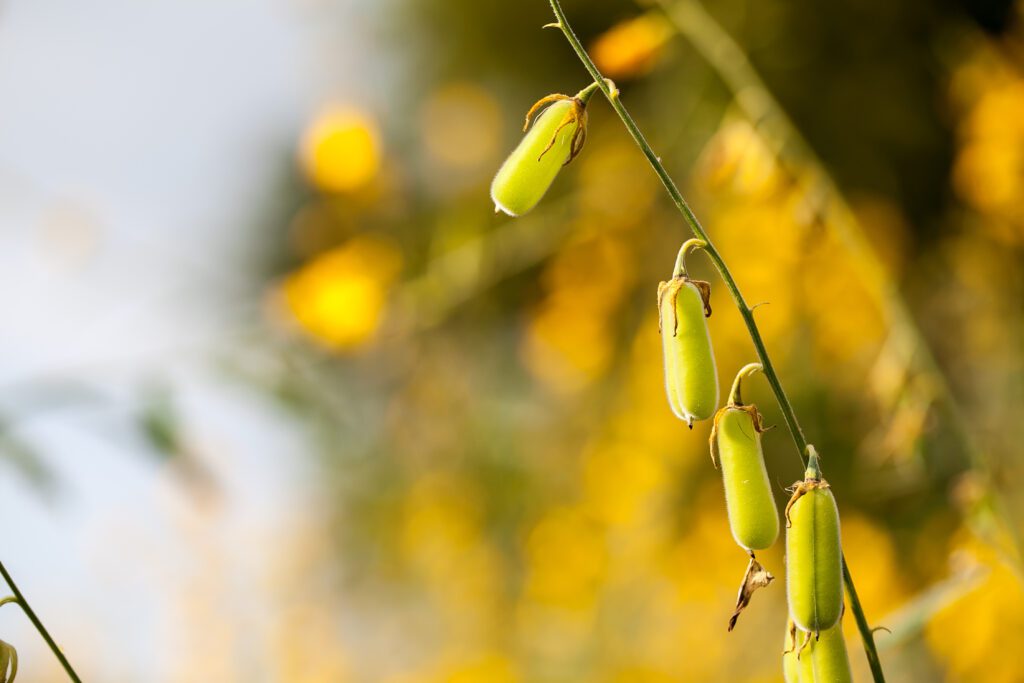by LUIS RODRIGUEZ, UF/IFAS Extension Polk County
Cover crops are used to improve soil fertility in farms or agricultural operations, and some of them are also used to control root-knot nematodes. Cover crops are traditionally used to cover bare land to protect the soil and/or improve soil characteristics between cash-crop cycles or planted alongside the cash-crop. They can be used as living mulch or as green manure.
Benefits of Cover Crops:
Cover crops can help farmers with the following:
- Suppress weeds
- Prevent soil erosion
- Retain nutrients on the farm that may be leached out
- Recycle and restore nutrients
- Suppress nematode populations
- Some cover crops can be used for hay production
- Can be used as a mulch in between rows
- Provide habitat for beneficial organisms
Types of Cover Crops
Not all cover crops are the same. Producers must understand their operations’ needs in order to determine what type of cover crops are suitable for them. Cover crops are classified as perennial or annual. Perennial cover crops are intended to last for many years. Examples of perennial cover crops are Rhizoma Peanut and Bahiagrass. Annual cover crops are intended to last one season. These could be summer cover crops (adapted to warm weather and longer days) or winter cover crops (adapted to cold weather and shorter days). Annual cover crops can be grasses, grains, or legumes.
Some examples of annual summer cover crops are:
- Sunn Hemp – A legume that originates from India and is normally used as green manure for root-knot nematode control. Its production cycle is 60 – 80 days. It can reach 6 feet tall, has yellow flowers, and can produce 6 – 8.5 tons of dry mass per acre.
- Cowpea – A legume that helps to fix free atmospheric nitrogen with the help of nitrogen-fixing bacteria. Like sunn hemp, cowpea is used to control root-knot nematodes depending on the cultivar selected. (Some cowpea cultivars can be negatively affected by pests and diseases.) This plant is well-adapted to Florida’s hot and humid conditions.
- Marigold – This is a popular bedding plant that can produce an allelopathy substance called alpha-terthienyl that may help suppress root-knot nematodes and other damaging organisms.
Some examples of winter cover crops are:
- Ryegrass – Ryegrass is a mid-to-late winter cover crop used for grazing. Ryegrass can help add available forage to cattle when the warm-season pasture is dormant. Ryegrass can be overseeded into the perennial grass pasture.
- Crimson Clover – This plant is used in combination with other winter annuals such as ryegrass. It is a reseeding annual adapted to fertile-drained soil. Unfortunately, it has a short grazing season.
Selecting a Cover Crop
When selecting a cover crop producer needs to take into consideration the following:
- Florida weather – Winter cover crops may not be ideal for southern Florida.
- Purpose of the cover crop – This includes soil protection, nutrient management, pest control, or crop production (hay and pasture).
- Cultivars and combinations – Different cultivars of the same cover crop may have different characteristics. Producers should select cultivars that benefit their specific needs. Sometimes combining multiple cover crops together could increase performance.
- Cash crop – When selecting a cover crop, especially when planting it alongside the cash crop, producers should be aware of the interactions the cover crop may have with the main crop of the operation. If the cover crop can somehow negatively affect the cash crop, it should not be suitable for the farm.
Understand Your Needs
Cover crops can be beneficial to producers. Regardless, farmers need to understand what their needs are because using the wrong cover crop could negatively affect the operation. Verifying soil fertility, weather conditions, and pest pressure will help farmers understand if and what cover crop would be beneficial to introduce into their operations.
For more information about cover crops access the following “Ask IFAS” Publications:
- MANAGING COVER CROPS FOR IMPROVED SOIL HEALTH
https://edis.ifas.ufl.edu/publication/AG277
- COVER CROPS FOR MANAGING ROOT-KNOT NEMATODES
https://edis.ifas.ufl.edu/publication/IN892
- COVER CROP BENEFITS FOR SOUTH FLORIDA COMMERCIAL VEGETABLE PRODUCERS
https://edis.ifas.ufl.edu/publication/SS461

